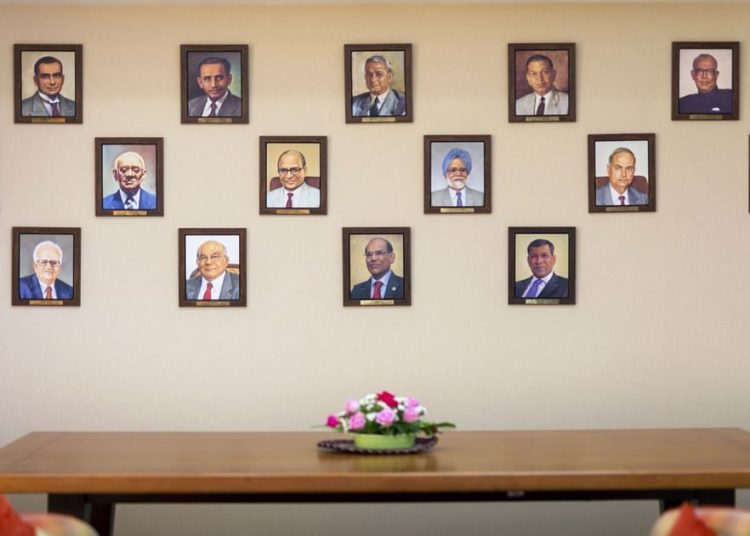A lot has changed between the time when Bimal Jalan headed the Reserve Bank of India and now when Shaktikanta Das occupies the 18th floor governor’s office at the central bank’s Mumbai headquarters. For one, India has adopted flexible inflation targeting and interest rates are set not just on the sole judgment of the governor but on the collective wisdom of a six-member monetary policy committee.
Still a common theme runs across the Jalan and Das years – both will oversee among the longest periods of declining and stable interest rates in India’s post-liberalisation economic history. But for very different reasons and with very different outcomes.
This week, as the MPC met for the first sitting of financial year 2021-22, amid the shadow of a second wave of Covid-19 infections, the committee reiterated its commitment towards accommodative monetary policy “as long as necessary to sustain growth on a durable basis.”
While the threat of rising inflation will prevent the committee from cutting rates further, a number of economists believe that the benchmark repo rate will remain steady at 4% through much of 2021-22.
Should that happen, Das, who took over in December 2018 and announced his first interest rate cut in February 2019, will oversee a nearly three-year period of declining or steady interest rates. This will be second only to the stretch seen under Jalan.
Different Economic Times…
The comparison between the two governors’ tenures, separated by two decades, ends there. They presided over vastly different economic times.
Jalan, who took charge as RBI governor in November 1997, got an opportunity to start reducing rates early in the tenure as inflation eased, thanks partly to steps taken by his predecessor C Rangarajan. In the annual policy of 1998-99, Jalan cut the bank rate, which was the benchmark at the time, from 10% to 9%. A drop in inflation from nearly 9% in 1997-98 to 5% helped kick-start the rate reduction cycle.
By the time Jalan exited in September 2003, the reverse repo rate and the repo rate — which had become the new benchmarks — were at 4.5% and 7% respectively. The average wholesale price inflation in the 2000s was at just under 5% compared to 8% in the decade before, allowing for the steady decline in rates. There was no inflation target then and the RBI used its judgement to juggle priorities between growth, inflation and financial stability.
Das too started cutting rates within months of taking charge. After taking over in an abrupt transition following Urjit Patel’s resignation, Das voted for a cut in his very first MPC meet in February 2019. At the time, the Indian economy was already showing growth strains due to the one-two punch of demonetisation and GST. Some argue that tight monetary policy played a role too.
It was growth concerns that prompted the beginning to the Das rate cut cycle as opposed to a material change in the inflation picture. This, even as the central bank’s focus on inflation has been heightened due to the new monetary policy framework.
Since then, inflation has mostly remained within the target band, helped by low global commodity prices, and allowed Das to continue bringing down rates.
Even before the Covid crisis hit, Das had overseen 135 basis points in repo rate cuts from 6.5% to 5.15%. Then came Covid and rates were slashed further to 4% where they stand now. In all, Das’ tenure has seen rates fall by 250 basis points in just over two years. The current outlook suggests that this level of rates may hold for some more time.
While rates were cut sharply in the aftermath of the global financial crisis as well, the failed to hold at those low levels as inflation picked up, forcing a quicker reversal.
As such, the extended period of low interest rates that have prevailed during Das’ tenure so far are beaten only by Jalan’s track record.
…And Different Outcomes
Just as the factors driving low interest rates then and now are different, the outcomes may also vary.
Jalan’s interest cuts were more than matched by a fall in interest rates across the economy. The benchmark 10-year bond yield, for instance, fell by nearly 700 basis points in response to the improving fiscal and monetary environment during that time. This helped banks clean-up their balance sheets and corporates deleverage.
Das has had it tougher. The bond market has struggled with striking a balance between lower benchmark policy rates and higher government borrowings. As a result, the 250 basis point cut in benchmark policy rates has been met with only a 150 basis point decline in the 10-year bond yield.

The extended period of low rates at the start of the 2000s eventually led to a pick-up in private investment and contributed to the boom years that followed.
Will the same happen now?
The recent decline in rates has had some positive impact on corporate leverage but bank balance sheets remain stressed. Also capacity utilisation, which was low even before the Covid crisis, has only fallen further. For Das’ low rate years to yield anywhere close to the economic gains seen as a result of the Jalan years, a lot more will need to fall in place.
Ira Dugal is Editor – Banking, Finance & Economy at BloombergQuint.















